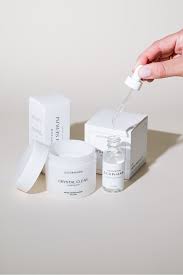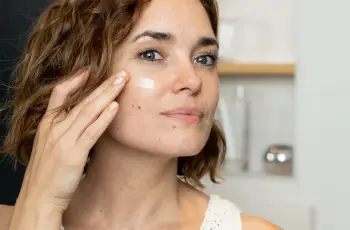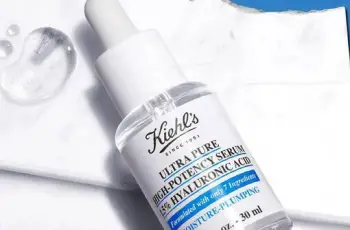
How to Layer Hyaluronic Acid and Lactic Acid in Your Skincare Routine
One of the most frequently asked questions in skincare communities is, “Can I use more than one acid in my routine, and how should I layer them for maximum results?”
For many, the world of skincare feels like a maze of confusing ingredient names and endless combinations that sound more like a science experiment than a beauty regimen.
This is especially true when it comes to acids—powerful ingredients that can transform your skin when used correctly or trigger irritation when misused or layered incorrectly.
But here’s the good news: with the right understanding of what each acid does and how to layer them, you can build a routine that delivers hydration, clarity, and glow.
Today we’re focusing on two acids that are commonly used and widely loved in skincare—hyaluronic acid (HA) and lactic acid—and how to layer them effectively.
Are Hyaluronic Acid and Lactic Acid the Same?
Despite both being called “acids,” hyaluronic acid and lactic acid have different purposes, properties, and functions within the skin.
Hyaluronic acid is a powerful humectant, meaning it draws moisture from the air and binds it to your skin, locking hydration into both the outer and deeper layers.
It can hold up to 1,000 times its weight in water, making it one of the most efficient hydration agents used in skincare products across all types and price points.
Its primary role is to plump, moisturise, and strengthen the skin’s protective barrier, keeping it healthy and defending it against environmental aggressors.
Lactic acid, on the other hand, is a gentle exfoliant from the alpha hydroxy acid (AHA) family that breaks down dead skin cells sitting on the skin’s surface.
In doing so, it smooths texture, brightens tone, and clears pores, while improving the absorption of any skincare products layered on top afterward.
While lactic acid also has mild humectant abilities, its primary strength lies in chemical exfoliation—not hydration like hyaluronic acid.
Can You Use Hyaluronic Acid and Lactic Acid Together?
Yes, absolutely—you can use hyaluronic acid and lactic acid together, and in fact, this is one of the most effective ingredient pairings you can add to your skincare routine.
Because lactic acid gently exfoliates and removes the dead skin barrier, it allows hyaluronic acid to better penetrate and hydrate the freshly revealed skin layers.
In return, hyaluronic acid helps to counteract any potential dryness or irritation that could result from using lactic acid, even though lactic acid is milder than many AHAs.
Together, they form a synergistic combo: one clears the path, and the other brings in the moisture and comfort your skin craves after exfoliation.
This duo is especially beneficial for people with dry, dull, or dehydrated skin, or anyone who wants smoother texture without the harshness of more aggressive actives.
How Do You Layer Hyaluronic Acid and Lactic Acid?
As with all skincare, the order in which you apply products matters—a lot—and that’s especially true when working with chemical exfoliants like lactic acid.
The general skincare rule of thumb is to apply products from thinnest to thickest in consistency to allow each formula to absorb fully into the skin.
Lactic acid is typically found in toners, cleansers, or exfoliating serums that are applied in the earlier stages of your routine due to their watery texture.
Hyaluronic acid, meanwhile, is often formulated into hydrating serums or moisturisers and is applied after exfoliating acids to seal in hydration and promote bounce.
If you’re using a lactic acid toner, cleanse your face first, apply the toner, wait a minute or two, and then follow up with your hyaluronic acid serum or moisturiser.
If both acids are in serum form, apply the lactic acid first, wait around 10 minutes, and then follow with your hyaluronic acid serum to avoid ingredient interference.
Why Should You Use HA After Lactic Acid?
The reason hyaluronic acid should follow lactic acid is simple: exfoliation removes dead skin, allowing better penetration of hydration-focused ingredients like HA.
Without that dead skin barrier in place, hyaluronic acid can reach deeper into the skin layers, offering long-lasting hydration and supporting your skin barrier function.
Layering in this order helps ensure that all active ingredients are working efficiently, so you’re not wasting product or risking surface build-up that leads to dullness.
Hydrating immediately after exfoliating also helps to soothe any irritation or dryness, especially if your skin is sensitive or prone to feeling tight after using acids.
This combination will leave your skin feeling smooth, supple, and visibly healthier without risking over-exfoliation or dehydration—a win-win for all skin types.
Can You Mix Hyaluronic Acid With Other Ingredients?
Hyaluronic acid is known for being one of the most universally compatible skincare ingredients, which makes it easy to integrate into almost any routine.
It can be used safely with retinol, niacinamide, vitamin C, AHAs, BHAs, and peptides, and even helps buffer their intensity to reduce irritation.
Because HA is all about hydration and skin barrier support, it acts like a skin-friendly cushion that complements actives without interfering with their function.
That said, always remember to patch test new products before use, especially when combining powerful actives like acids or retinoids with HA in a new routine.
This simple step ensures you avoid any unwanted irritation, allergic reactions, or ingredient incompatibilities that can disrupt your skin’s delicate balance.
What About Adding Niacinamide Into the Mix?
Yes, you can absolutely use niacinamide alongside both hyaluronic acid and lactic acid, and this trio can be highly beneficial if introduced correctly into your routine.
Niacinamide helps regulate sebum production, reduce redness, and strengthen the skin barrier, making it an excellent companion to both exfoliating and hydrating acids.
It works well with hyaluronic acid, as they both are humectants that bind moisture to the skin, though HA draws it in while niacinamide retains it more effectively.
If you’re layering all three ingredients, apply them in this order: cleanse → lactic acid toner → niacinamide serum → hyaluronic acid serum → moisturiser.
This ensures that exfoliation happens first, then skin receives balancing and brightening benefits, followed by deep hydration and barrier reinforcement.
Should You Moisturise After Using Lactic Acid?
Applying a moisturiser after lactic acid is highly recommended—especially for those with dry, sensitive, or combination skin that needs protection from external stressors.
Moisturiser helps lock in hydration from previous steps and forms a barrier against environmental pollutants, UV rays, and moisture loss.
Even if your moisturiser contains hyaluronic acid, layering it over an HA serum can amplify hydration levels and keep skin soft, plump, and resilient.
This step also helps to prevent over-exfoliation and flaking, which can occur even with gentle AHAs like lactic acid if not balanced with enough hydration.
So yes, moisturising after lactic acid is not only safe—it’s actually essential if your goal is skin that’s glowing, strong, and visibly nourished.
Key Do’s and Don’ts for Using Lactic Acid and HA Together
Do: Always apply lactic acid before hyaluronic acid to exfoliate dead skin cells and maximise product absorption and hydration afterward.
Don’t: Layer too many strong actives (like retinoids or vitamin C) immediately after exfoliating unless your skin is highly tolerant and well-prepped.
Do: Follow your lactic acid application with a hydrating HA serum and a moisturiser to seal in all the benefits and protect the skin barrier.
Don’t: Forget SPF in your morning routine, especially if you’re exfoliating at night—fresh skin is more vulnerable to sun damage and hyperpigmentation.
Do: Use these ingredients on alternate nights if you’re new to acids or have sensitive skin—gradual use ensures safe results and happy skin.
Final Thoughts
Lactic acid and hyaluronic acid are an incredible skincare pairing that can leave your skin smoother, softer, and more hydrated when layered correctly.
By applying lactic acid first to exfoliate and prep the skin, followed by hyaluronic acid to hydrate and restore, you set the stage for your healthiest skin ever.
Remember to monitor how your skin reacts, go slow if needed, and don’t forget to protect with SPF every morning if you’re using acids at night.
This routine is suitable for all skin types with minor adjustments, and once mastered, will become a cornerstone of your skincare strategy for years to come.
If you have any questions or want product suggestions based on your skin type, come say hi on Instagram or catch our Green Sofa YouTube series for more tips!


